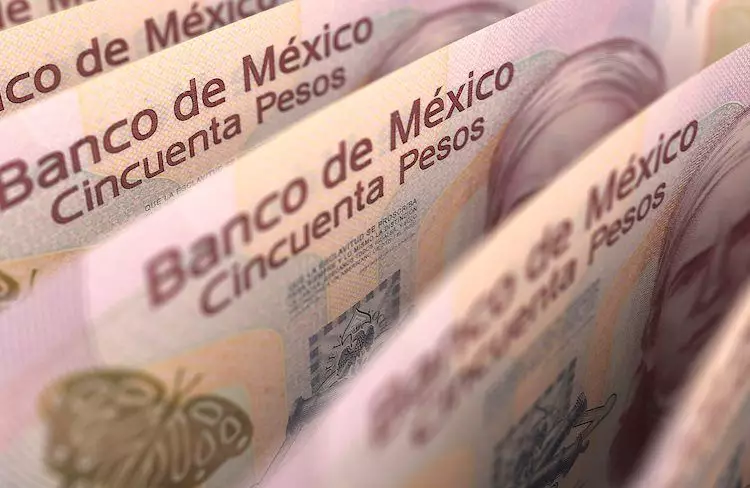The Mexican Peso (MXN) has recently demonstrated a notable resilience, achieving a three-week high as the US Dollar (USD) faces downward pressure. This article examines the underlying factors contributing to the Peso’s rise, evaluates the implications of changing Federal Reserve (Fed) rate expectations, and considers the broader economic context that has influenced this currency dynamic.
Market Dynamics and a Softening Dollar
The USD has seen a decline partly due to changing expectations regarding interest rates set by the Federal Reserve. The CME FedWatch Tool indicates a burgeoning 43% chance of a 50 basis points rate cut, significantly altering investor sentiment towards the greenback. The perception of a weaker dollar has been advantageous for the Peso, which, buoyed by recent positive developments in Mexico’s political landscape—specifically the passage of judicial reforms—has strengthened amidst these fluctuations.
Political stability often plays a pivotal role in currency valuation. After a period marked by concerns about governance and reform, the approval of critical judicial measures has alleviated some uncertainties, enabling the Peso to rally as investors regain confidence. In light of this, it is essential to analyze how political and economic factors intertwine to shape market movements.
Macroeconomic Indicators and Future Projections
The economic outlook for Mexico is underscored by upcoming data releases on Aggregate Demand and Private Spending, which are anticipated for the second quarter of 2024. These indicators will provide additional context for assessing the Peso’s trajectory. Furthermore, inflation in Mexico has deceived expectations by dipping below 5% in August, heightening prospects for further easing measures by Banxico, the Banco de México.
The Citibanamex Survey released in September reveals that many analysts forecast Banxico will reduce interest rates to approximately 10.25% in 2024 and 8.25% in 2025, which is a pivotal element to consider. Lower interest rates could potentially weaken the Peso in comparative terms. However, if inflation is managed effectively and remains subdued, the Peso may capitalize on a stable economic environment, allowing for growth despite the looming threat of rate cuts.
Transitioning to the US economy, the University of Michigan’s Consumer Sentiment Index exhibits an increase, climbing from 67.9 to 69.0 and surpassing expectations. As consumer sentiment directly correlates with spending, this improvement can exert substantial influence on the overall economic climate, impacting currency pairs, including USD/MXN.
Enhanced consumer confidence not only supports the US economy but also reflects broader tendencies in consumer behavior, which can affect the MXN positively as it may indicate a more stable North American economic landscape. When US consumers feel secure in their finances, it typically leads to increased spending, fostering a healthier trade environment for Mexico.
Technical Analysis: The USD/MXN Exchange Rate Movement
Currently, the USD/MXN exchange rate is facing downward pressure, with the currency pair experiencing a pullback that has pushed it below the psychologically important level of 20.00 MXN to 1 USD. The Relative Strength Index (RSI) has shifted bearish, suggesting that momentum may favor sellers at this time.
Immediate support lies at the August 23 low of 19.02. A breach of this level could lead to further declines, exposing the 50-day Simple Moving Average at 18.99, followed by significant historical lows. Conversely, for a bullish outlook, the USD/MXN must surpass the critical resistance level at 20.00, which may lead to challenges at higher ceilings including the year-to-date high of 20.22.
Hurdles lie ahead, as each currency fluctuation influences perceptions and strategic actions of traders. If rates continue to spiral lower, gains in the Peso could persist, albeit with careful monitoring of both US and Mexican economic indicators.
The recent rise of the Mexican Peso illustrates a mixture of political resilience, favorable economic indicators, and shifting market expectations concerning US monetary policy. Factors such as judicial reform, inflation control, and consumer sentiment play crucial roles in shaping the currency’s performance.
As we look forward, the interplay of Banxico’s policy decisions and the Fed’s approach will continue to dictate the Peso’s course. The trajectory of the USD/MXN exchange rate remains susceptible to fluctuations, and investors must remain vigilant, assessing both macroeconomic trends and market sentiment to navigate this dynamic landscape effectively. The coming weeks will be pivotal for both currencies, as emerging data will likely dictate their vibrancy in the global market.

